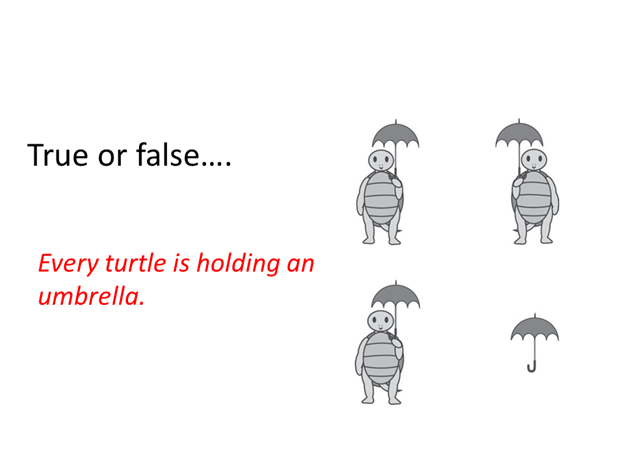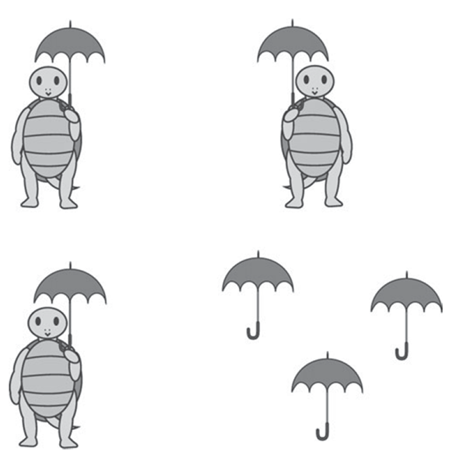Can you give me an example of a grammar "mistake" (i.e., something different than what an adult would say) that you've heard a child make, or that you can imagine a child might make? (In any language)
One common mistake children make in English is over-regularization: they treat an irregular word like it's regular. For example, the regular past tense in English is formed by adding -ed after a verb: the past tense of kick is kicked, the past tense of meow is meowed, etc. But a lot of English words are irregular. For example, the past tense of go is not goed; it's went. However, children will often say goed! (as in, "I goed to the store today.") This is over-regularization.
There are lots of other kinds of mistakes children might make; this is just one example.
Why does this happen? Is it because of a problem with children's grammar (their understanding of how their language works) or is it something else? In theory, there are two possibilities:
- Children's grammar is not continuous with adult grammar. In other words, children's grammar is qualitatively different than adult grammar. Children follow different rules when they use language than adults do. And at some point as children get older, they figure out the "correct" rules and they change the way they use grammar. During development, there is a concrete change in what children know about their language.
- Children's grammar is continuous with adult grammar. In other words, children's grammar is not substantially different than adult grammar; as children grow up, the grammar they are using works the same way as adult. When they say "wrong" things, it happens for some other reason.
Do you have any guess what the "other reason" might be? Which theory do you think sounds more likely to be true: the theory that child grammar is continuous with adult grammar, or the theory that it is not? (There is no right answer here, and your answer won't be graded for being right or wrong; I just want to see what you think.)
Let's look at a concrete example of a child grammar issue and how it has been studied.
Imagine I showed you the below picture and said, "Every turtle is holding an umbrella." Would you say the sentence is TRUE or FALSE?

The correct answer is TRUE. There are three turtles, and everyone who's a turtle is also holding an umbrella. There's an extra umbrella sitting there, but that's irrelevant. It's just a distraction.
Did you get the question right? What about young kids -- do you think young kids get this question right?
As it turns out, young kids often get this question wrong. They often say "false". And if you ask them why, they often point at the extra umbrella.
There are two possible explanations for why this happens.
- Child grammar is not continuous with adult grammar. In other words, children interpret "every" to mean something different than what adults do. For us, "every turtle has an umbrella" means: "if someone is a turtle, then she has an umbrella". But for children, it seems like like they interpret the sentence to mean "there is a one-to-one mapping between turtles and umbrellas; there are no extras of anything left over". So child language somehow works differently than adult language.
- Child grammar is continuous with adult grammar. Children correctly understand "every", but they get tricked too easily in this question. Maybe they are too easily distracted by the extra umbrella there.
If the second explanation is the right one, that must mean there's something about children's psychological mechanisms that is different than adults. Below I've listed three key psychological mechanisms (if you did the "Psychological mechanisms" module these will look familiar to you; if you haven't done that module yet, you might want to do it now before you continue with this one):
- Working memory
- Executive function
- Top-down processing
Which psychological mechanism do you think is the one that might be important for avoiding getting tricked by this question?
I think Executive Function might be the key thing here. To get the right answer and not be tricked, kids need to be able to ignore the extra umbrella, which is completely irrelevant. Ignoring irrelevant information and focusing on the important stuff is executive function.
An interesting experiment by Utako Minai and colleagues tested whether this kind of mistake children make happens because they are bad with language or because they're bad with executive function.
- Minai, U., Jincho, N., Yamane, N., & Mazuka, R. (2012). What hinders child semantic computation: children's universal quantification and the development of cognitive control. Journal of Child Language, 39, 919-956.
They tested young kids on pictures and sentences just like the ones we saw before. They also tested them on "easier" pictures, where there are three extra umbrellas instead of just one, as shown below. Their logic was that on the easier pictures, the extra umbrellas are less distracting: when there's just one extra umbrella it really stands out, but when there's three extra umbrellas they seem like a normal part of the picture.

If kids really don't understand what "every" means (i.e., if their language is non-continuous with adult language), they should still make the same mistake with this picture as they did with the harder one we saw before.
In the other hand, if kids correctly understand what "every" means (i.e., their language is continuous with adult language) and their mistake was just because they got too distracted by the single umbrella... then in this easier picture, where the umbrellas as less attention-grabbing, then the kids might not make the mistake.
Minai and colleagues tested both kids and adults in this experiment. The table below shows how often they were correct with each kind of picture (slightly simplifying; here I am only reporting results from the first block of their experiment).
| Single umbrella (hard) | Multiple umbrella (easy) | |
| Children | ||
| Adults |
We see two important things here. First of all, even adults don't do a very good job answering the question correctly when there's just one umbrella! And secondly, children answer a lot better in the easy condition (multiple umbrellas) than the simple condition (single umbrella).
This is only testing one aspect of language (how children understand the meaning of every), and for other aspects of language the results might be different. But at least in terms of how children understand every, do you think this experiment suggests that child grammar is continuous or non-continuous with adult grammar?